Spice Zee, Cherums and Plerries…Hybrid Fruit in California
You ask, what’s a plerrie anyway? Or you could ask; “What do you get when you cross a plum with a cherry? A hybrid fruit of course!
Hybrid fruit is a potentially lucrative, and delicious, market. Fruit growers are motivated by the lure of inventing a product that commands premium prices, from 50 cents to $1 or more per pound than conventional fruit. The breeders are also aiming for fruit that will have a longer harvest period to be available to shoppers longer. And with the rise in cooking styles that celebrate the ingredients, American consumers are demonstrating a willingness to spend more on food and a desire to hear the stories behind their produce.
More and more local farmers markets are starting to bring in their hybrid fruits and heirloom produce……you might be asking, why not keep it simple: an apple is an apple, a peach is a peach, a cherry is a cherry, especially since breeding hybrids is a pain-staking and slow process. It might takes as many as 1,000 tries before the breeding process actually is a success in hybrid farming.
You’ve seen hybrids before, perhaps without even knowing it. Our yellow banana, otherwise known as the “dessert banana,” is actually a hybrid scientifically named Musa × paradisiacal. Boysenberries are a hybrid between a blackberry and raspberry, Meyer lemons are a hybrid of a lemon and a Mandarin orange, kiwis are hybrids of the genus Actinidia, and grapefruits are an 18th-century hybrid originally bred in Jamaica. Apples—Braeburn, Macoun, Macintosh, Red Delicious, Gala, Fuji, Pink Lady, Golden Delicious—are also familiar hybrids.
A whole list of Hybrid fruits

|

|
 Aprium |
 Fairchild tangerine |
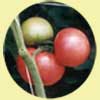
|

|

|
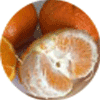
|
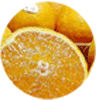 Dekopon Dekopon |

|

|
 Oroblanco Oroblanco |

|

|
 Jostaberry Jostaberry |

|
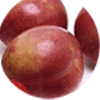
|
 Rangpur Rangpur |

|

|
 Citrofortunella Citrofortunella |

|

|

|

|

|

|

|

|
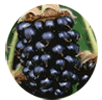
|
Breeders of hybrid fruits have largely dodged criticism faced by big makers of genetically modified plants in part because their old-fashioned methods take place in the field, not in a lab, mimicking how plants naturally evolve.
Hybrid fruits make up a tiny portion of the $21.5 billion in U.S. farm cash receipts recorded last year. Just 4,332 acres of Pluots were planted nationwide, compared with 109,319 acres of plums and prunes, according to the most recent census by the U.S. Department of Agriculture in 2007.
When hybrids earn an officially recognized name by the government, their developer is granted a patent. Every new blend of fruit may be trademarked as something “distinctive.” The pluot, for instance, is legally different from another apricot-plum hybrid, the “Dinosaur Egg,” sold on the market today. Consider the endless possibilities: a nectacotum (hybrid of apricot, plum, and nectarine), the peacotum (hybrid of peach, apricot, and plum), the nectarcot (hybrid of nectarine and apricot) or the lemonquat (hybrid citrus of lemon and kumquat with an edible rind). The once-exotic tangelo, a cross between a tangerine and either a pomelo or a grapefruit, now seems ordinary in the face of next-generation fruit hybrids that tempt us with their good looks and striking tastes.